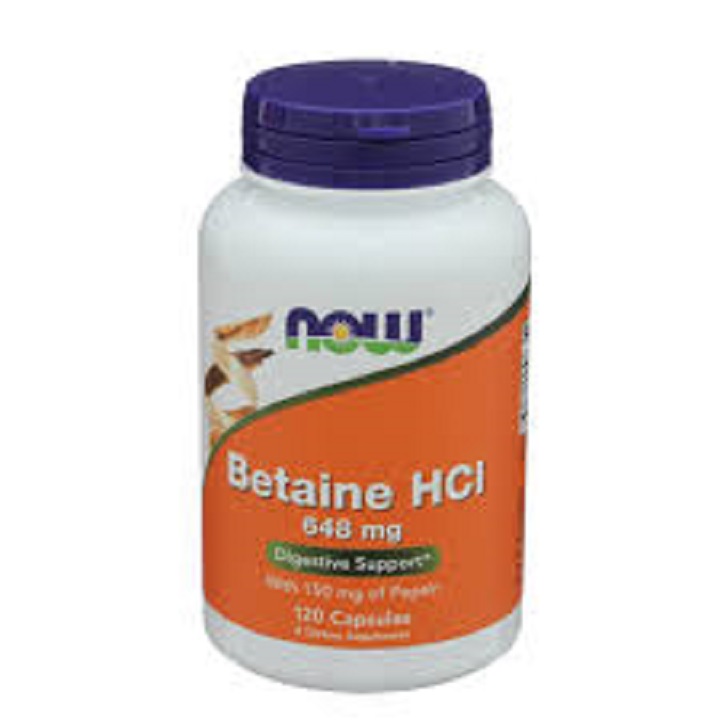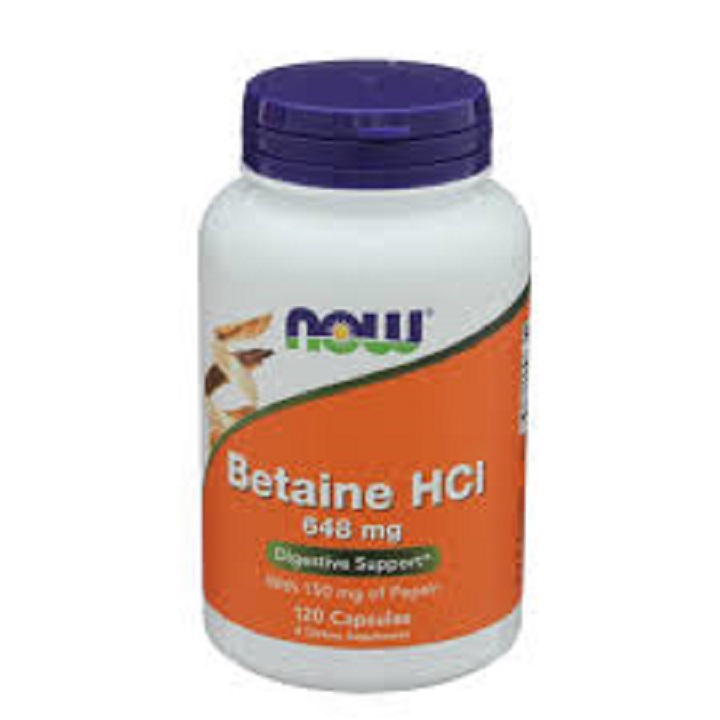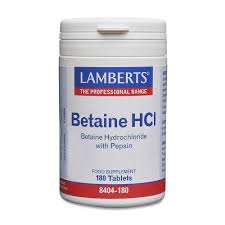
How To Use Betaine HCL For Digestive Health
Digestive discomfort affects millions of people, ranging from occasional indigestion to chronic conditions like low stomach acid (hypochlorhydria). Betaine (betaine hydrochloride) has emerged as a popular supplement to support healthy stomach acid levels and overall digestive wellness. In this in‑depth article, we’ll explore what Betaine HCL is, how it works, appropriate dosages, usage tips, safety considerations, and how to integrate Betaine HCL into your digestive‑health routine.
What Is Betaine HCL?
Betaine HCL, or betaine hydrochloride, is a supplement that blends betaine (a choline derivative) and hydrochloric acid. Betaine HCL consumed orally dissolves in the stomach, releasing hydrochloric acid that increases gastric acidity. This mimics the production of stomach acid that your body makes naturally and supports digestion when yours is insufficient.
Why Use Betaine HCL?
Optimal acidic stomach environment is required for:
Protein digestion – Adequate acidity helps in protein digestion to amino acids by enzymes like activation of pepsin.
Nutrient absorption – Stomach acid plays a role in the absorption of important minerals such as iron, calcium, and B vitamins.
Gut microbial balance – Acidic pH helps to inhibit pathogenic bacteria that prefer alkaline environments from growing.
Digestive symptoms – A lack of stomach acid may cause bloating, gas, fullness, heartburn, reflux, and malabsorption of nutrients.
Taking Betaine Hydrochloride: Uses, Side Effects, and More can restore gastric normal acidity, easing digestion and aiding meal assimilation.
How Does Betaine HCL Work?

When taken orally,
is hydrolyzed in the stomach into:
Hydrochloric acid (HCl) — potentiates gastric acidity.
Betaine (trimethyl glycine) — supports liver function and methylation reactions.
The added stomach acid:
Activates pepsinogen to pepsin, which facilitates protein digestion.
Stimulates gastric motility, permitting the normal emptying of the stomach.
Reduces stomach pH to below 3, which liquefies excessive bacterial overgrowth in the upper GI tract.
Thus, Betaine HCL provides an extra burst to your own stomach acid production.
Who Can Benefit from Betaine HCL?
Betaine HCL supplementation is used in adults with:
Symptoms of low stomach acid (gas, bloating, undigested food, persistent fatigue).
Acid reflux or GERD (only after confirming low acid—work with a practitioner).
Inefficient protein digestion of meals.
Mineral deficiencies like iron, zinc, or B12 vitamin.
History of antacid or proton‑pump inhibitor (PPI) use, which suppresses stomach acid in the long run.
Note: Always consult a health practitioner to help determine if low stomach acid is likely. Self‑diagnosis can be hazardous.
How to Test for Stomach Acid Levels
Before taking Betaine HCL, it is useful to test your level of acidity in the stomach. Two tests readily available:
At‑home “betaine HCL challenge”
Begin with a single tablet of Betaine HCL (usually 500 mg) with a large-protein meal. If you feel heat or mild burning in your stomach or chest within minutes of eating, your acid is likely sufficient. If not, the result could mean low stomach acid—but consult a provider.
Medical gastric pH testing
Gold standard, measuring pH directly with endoscopy or Heidelberg capsule, but more inconvenient and invasive.
Because these techniques are not definitive, it is best to consult an experienced practitioner when selecting the use and dosage of Betaine HCL.

How to Take Betaine HCL
Step-by-Step Guide
Start low
Begin with Betaine HCL 500 mg (one capsule) with each meal that contains protein.
Take with food
Take with a full glass of water right away when you begin eating a meal containing protein.
See how you react
If you feel a warmth, that is sufficient supplementation. No heat sensation? Increase gradually over subsequent meals.
Titrate dose
Some need up to 3,000 mg (six capsules) with each big meal. Start increasing by 500 mg every 2–3 meals until you sense heat, then reduce one capsule back to find your optimal dose.
Repeat as necessary
Take Betaine HCL during meals of medium to high protein intake. You can discontinue or reduce on light days.
Monitor often
Stop after 4–8 weeks and check acidity again or watch for symptoms. It may be all you require if underlying cause is eliminated.
Safety and Precautions
Fairly safe when used appropriately, but consider:
Don’t use when you have an ulcer or ulcer disease — more acid can bother an ulcer.
Stop using if heartburn worsens, or if you develop symptoms of peptic ulcer like pain in the abdomen, nausea, or black, tarry stool.
Be cognizant of acid rebound — taper dose gradually rather than quitting abruptly.
Drug interactions — visit a practitioner if antacids, PPIs, or acid blockers are used.
Pregnancy and disease — ask your physician prior to taking Betaine HCL if pregnant, lactating, or have serious heart disease, liver, or kidney disease.
Overcoming Common Side Effects

Side effects are normally mild, but be aware of:
Burning — too much of a dose can be unpleasant; reduce dose or switch to another meal.
Stomach discomfort or indigestion — reduce dose or discontinue use.
Reflux acid — ironic if stomach is emptied more quickly; try to use smaller meals or reduced dose.
Monitor symptoms at all times and never exceed recommended amounts.
Taking Betaine HCL with Other Supplements
Take Betaine HCL with:
Pepsin — helps convert proteins.
Digestive enzymes — amylase, lipase, protease help in general breakdown.
Ox bile — improves digestion of fatty foods.
Probiotics — maintains healthy gut flora, especially as acid strength increases.
Spacing supplements avoids overloading digestive tracts.
Example Betaine HCL Protocol
Assess symptoms — bloating, gas, indigestion, anemia, low energy.
Take 500 mg with a protein food.
Gradually increase by 500 mg per meal until warmth indicates effective dose.
Maintain that dosage daily, adjusting as needed.
Wait 4 weeks, then discontinue supplementation, assess response.
Reappear when symptoms return, or shed permanently as the stomach returns to health.
Tips for Success
Track symptoms on a daily basis—especially before vs. after meals.
Eat balanced meals—protein, fiber, and fat support digestion.
Hydrate with water—water keeps digestive secretions in balance.
Avoid too much antacids—they negate Betaine HCL effect.
Reassess every few months—your needs may shift as your gut heals.
When to Seek a Healthcare Provider
Consult a doctor if you experience:
Persistent reflux, severe pain, or stool blood.
Vitamin deficiencies in spite of supplementation.
Fatigue, weakness, pallor (possible anemia).
Became worse after stopping Betaine HCL.
It is critical to rule out disorders like H. pylori, gastritis, Barrett’s esophagus, and autoimmune disorders.
The Last Word
Betaine HCL can be a simple but effective solution to boost digestive health where stomach acid is low. With controlled dosing taken with meals, many people find that they gain:
Enhanced protein digestion.
Less bloating and gas.
Improved nutrient status.
Better balanced gut micro‑flora.
However, it’s not a solution for everyone. Begin low, listen to your body, and speak to a healthcare professional—particularly if you’re on acid‑lowering medication or have a preexisting GI condition. Used appropriately, Betaine HCL can restore digestive balance and promote overall health.



